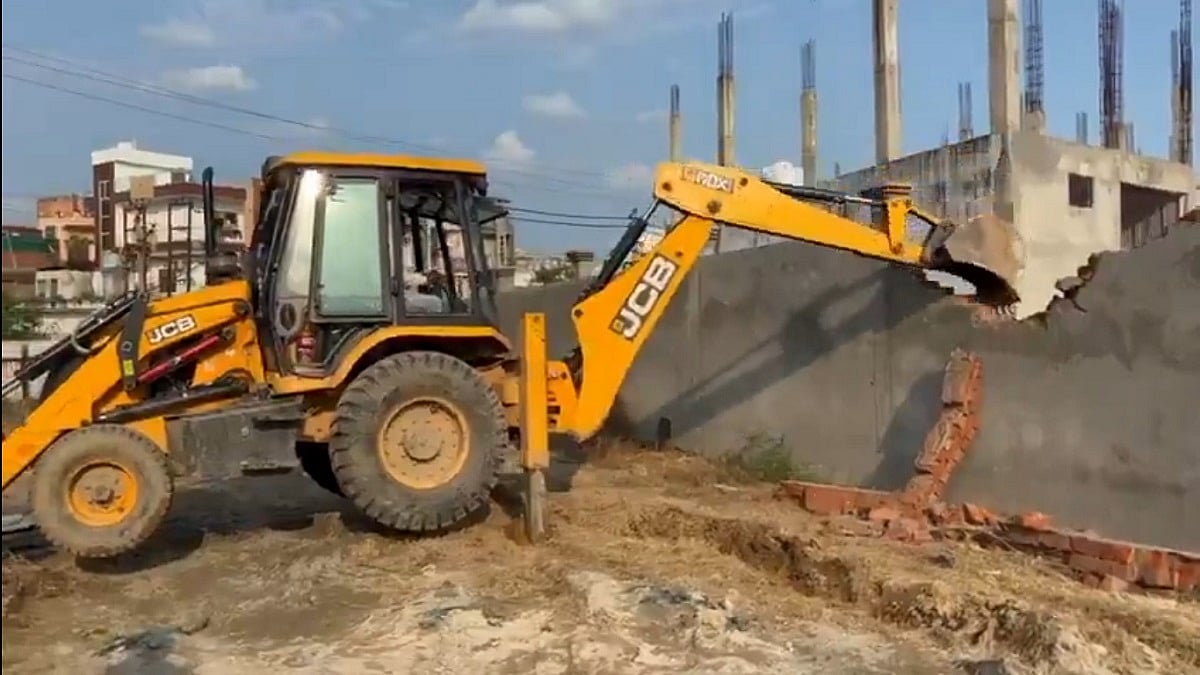A four-part webinar series was organised from December 8 to December 11 titled ‘The changing contours of Maharashtra’. This session was organised by The Free Press Journal and Maharashtra State Road Development Corporation (MSRDC). The radio partner for the session was Red FM. It involved more than 12 panelists which included policy makers, industry players and other agencies. The sessions included an overview of the Samruddhi Expressway; Agro-processing zones and value-adding agriculture; Industrial clusters, townships and IT; and Education, skill development and jobs. The session were moderated by RN Bhaskar,Consulting Editor, FPJ.
Given below are key talk points of the series:
Radheshyam Mopalwar, VC & Managing Director, MSRDC:
· Roads are the key to prosperity.
· The existing length of expressways in Maharashtra (95 kms) is low compared to countries like Germany (expressway 13,000 kms) and Japan (10,021 kms) which have almost the same area like Maharashtra. South Korea, one third of Maharashtra, is almost equal to Vidarbha region and has 5,500 km of expressway.
· About 90 per cent of traffic moves on national highways (17,725 km), state highways (32,423 km) and main district roads (55, 384 km) in Maharashtra.
· Roads and other modes of transports complement each other — one mode of transport gives rise to another mode.
· Samruddhi connects 10 districts. The commute time from Mumbai to Nagpur will soon be 8 hours compared to 20-36 hours (upper limit for goods).
· It will generate direct employment for 5 lakh people over the next decade. As the townships are built, they will create an employment of 20 million.
· The underbellies of Maharashtra will also be connected by this project.
· All 36 districts of Maharashtra over the period of next two decades will have expressway connectivity connecting each other.
· Greenfield expressways boost economies more than brownfield connectivity.
Vijay Waghmare, Joint Managing Director, MSRDC:
· Samruddhi will have a utility corridor.
· At present, optical fibre lines are provisioned across the entire expressway and a gas pipeline project will be executed too.
· The gas pipeline will start from Mumbai and go up to Nagpur (further to Angol). GAIL will be setting up the pipeline and will be completed in 12 months. This will be an opportunity for investors.
· A solar energy generation of 450 MWs can be possible through the expressway. This project will be developed in association with a South Korean company.
· With NTPC Vidyut Vyapar Nigam, MSRDC will be setting up electric vehicle charging infrastructure across the expressway. In the next 5-10 years, EV will be the future and the expressway will be future ready.
· MSRDC came up with a vision of partnering with farmers for the Samruddhi project. The farmer who gave away his or her land is assured of annuity for the next ten years and assured a developed piece of land which he can develop or sell later.
· MSRDC will complement MIDC’s efforts, with its 19 townships.
Chandrakant Pulkundwar, Joint Managing Director, MSRDC:
· Land acquisition is usually a challenge for many projects
· MSRDC acquired 9,000 hectares of land including 7,800 hectares of private land and forest land for this project.
· The government of Maharashtra offered five times the market value. Initially, there was a lot of resistance but later issues were resolved.
· MSRDC appointed 300 plus communicators for all the 10 districts, to explain to the villagers the process, land rate and to address their queries, if any.
· Almost 80 per cent of the land was purchased through direct transfer accomplished within a few minutes.
· Within one and a half years, the land for the project was acquired.
· The project is developed keeping the ecology in mind — adding suggested over and under passes, minor bridges, light and sound barriers etc.
· MSRDC was expected to plan 8.63 lakh trees but MSRDC is planting more than 12 lakh trees on both sides of the expressway. All plants will be geotagged. Bamboos will also be planted.
· The plant species are selected based on the region.
· There will be 50 toll plazas, and more than 300 toll lanes in the expressway.
Deepak Taware, CMD, Maharashtra State Warehousing Corporation (MSWC):
· Maharashtra permitted setting up of private markets (60 markets working in tandem with APMCs), direct marketing licenses (11,000 licenses issued), direct procurement centres by corporates, and direct purchase from farmers (Reliance, Walmarts and others), and contract farming provisioning. Maharashtra is the only state to have such a system.
· Three main infrastructure projects funded by the World Bank (project on climate resilience agriculture [PoCRA] and State of Maharashtra Agriculture and Rural Transformation [SMART]) and Asian Development Bank (Maharashtra Agribusiness Network [MagNet]), will be part of the Samruddhi corridor over the next five to seven years.
· MSWC has acquired land in three locations from where the Samruddhi Mahamarg is passing — Vaijapur in Aurangabad; Sawargaon in Buldhana and Arvi in Wardha. MSWC will set-up agriculture logistics parks in these areas.
· FPOs are doing well. The federation of FPOs called MAHA FPO, is working with the National Agricultural Cooperative Marketing Federation of India (NAFED) to establish storage for onions in the Nashik area. Maha FPO has created 50,000 metrics tonnes storage capacity.
Arun Raste, Executive Director, National Dairy Development Board:
· In terms of agriculture, food processing in the fifth largest sector. In terms of its contribution to GDP, it is 13 per cent. It is growing at the annual average rate of 8.5 per cent from 2013-2018.
· Our processing centres are one of the largest globally and it should reach USD 500 billion in the next three years.
· Samruddhi Mahamarg can enhance income.
· India is overlooking nutraceuticals which can go up by USD 18 billion by 2025 in India alone. Globally, the nutraceuticals market is likely to go up by USD 336 billion.
· Three months ago, NDDB established a honey testing lab. The honey which was sent to Germany for testing can be tested in NDDB’s lab in Anand.
· NDDB is working towards improving lives in Vidarbha and Marathwada regions through milk procurement from farmers.
· NDDB invested Rs 50 crore to refurbish its Nagpur plant. Today, that plant -- given to NDDB on a 30 years lease -- is processing about 2 lakh litre of milk
· NDDB is looking at enhancing breed and fodder improvement in the next couple of years.
· Like the one in Kolhapur, NDDB will be setting up peer-to-peer learning. NDDB will be setting up micro-training centres.
Sachin Sharma, GM & Head- Channel Operations, ITC:
· ITC has been in the Vidarbha region for almost 20 years now through project e-Chaupal. It is present in over 20 districts with 1, 000 e-Chaupals.
· We are working closely with Agharkar Research Institute to develop new varieties of soybean, pulses and other crops. We are active in the fruits and vegetables segment as well.
· We worked very closely with the Maharashtra government on the SMART project.
· Maharashtra has been the focus for our agribusiness division.
· ITC has realised that the Vidarbha region produces high-quality wheat. So, for the last two years we have been sourcing wheat for our Aashirvaad brand of Atta also from this region.
Venugopal Reddy, Principal Secretary (Industries), Maharashtra Government:
· Recently, Maharashtra acquired 40,000 acres of land. It will be utilised to develop industrial clusters in addition to the existing clusters.
· Samruddhi corridor to give boost to AURIC city (Shendra and Bidkin get connected to Samruddhi corridor) which has 10,000 acres of land with plug and play infrastructure.
· Dighi-Mangaon is another industrial corridor, part of the Delhi Mumbai Industrial Corridor (DMIC), which will come up soon.
· The Bangalore-Mumbai economic corridor has been planned which will be notified soon.
· Maharashtra government has introduced innovative land allotment policies like short-term leases and rental policies even in AURIC. This has led to the initial cost of land drop drastically.
· Data centres worth Rs 30,000 crore are being set up in Maharashtra.
· Maharashtra has recognised sector specific incentives.
Tej Paul Bhatla, VP & Head Public Services Business, India, TCS:
· Samruddhi project, which will link Mumbai to Nagpur, will be useful for TCS’ associates based in Nagpur facility to travel across Maharashtra.
· This TCS facilityin Nagpur employs 8,000 people. It will soon become a 10,000-people facility.
· The Ministry of Electronics and Information Technology (MEITY) has set up a goal to make India a USD 1 trillion digital economy by 2025. Projects like Samruddhi in Maharashtra will contribute a significant portion to that economic growth.
· Highways are arteries of economic growth.
· Samruddhi along with the Golden Quadrilateral can contribute significantly to the GDP of Maharashtra.
· There could be use of technologies to keep highway defect-free like IOT sensors to determine bumpiness on the road; video and image analytics to determine traffic building up at choke points and in accident prone areas, smarter light technology; installation of sustainable energy among others.
Mohit Bhasin, Partner and Lead, KPMG:
· The aspiration of Maharashtra to become USD 1 trillion economy by 2025 — introducing Magnetic Maharashtra 2.0; gearing up for Atma Nirbhar Bharat; the Sherpa initiative to support China-plus-one narrative; and helping the private sector which is looking to investing in Maharashtra — is done in a very structured approach.
· The state provides an affirmativeness in terms of certainty in timelines and guidelines which is a very important aspect especially today.
· The plug and play infrastructure is a very interesting concept. The way AURIC is reinventing itself and providing the land parcels for expansions to fresh investors is a role model to be considered.
· The innovative approach to specific sectors is working in favour of the state.
· There are large global players considering India especially Maharashtra for investments.
· Maharashtra has a very strong track record of picking up very high-profile investors — especially in the last three-four years — which other states have found very challenging.
Sujata Saunik, Additional Chief Secretary at General Administration, Maharashtra Government:
· In the coming seven months, the government should be able to develop the manpower that will be required in and around the Samruddhi corridor.
· The government is engaging with industry and is trying to get industrial partners on board with us. In Aurangabad, the government has a tie-up with CMIA and MCCIA.
· Local associations, government, and industry have to collaborate. The key word is collaboration.
· In the new townships, however, the job roles will be largely in the non-traditional sector — a large number of people who can navigate the digital medium will be required.
· Samruddhi will give an opportunity to Maharashtra to bring about a vocational training landscape like it exists in some of the other countries.
Ramesh Bhat, officiating VC and Dean Management studies, NMIMS University:
· Education must focus on skill development which is an integral part of the education process.
· Indian education system is catching up very rapidly with global standards of excellence.
· Many institutions which are in Maharashtra are getting and receiving good accreditation from reputed global agencies.
· The industry interface which the educational institutions are able to create is a privilege that is available to institutions in Maharashtra.
· Over the years, governance among the academic institutions is also changing fast.
· The education sector is digitally driven.
· Keeping agriculture zones in mind, NMIMS initiated a process, two years ago, of setting up an agriculture school in its Shirpur campus. There modern agriculture techniques and tools are taught.
Lim Boon Tiong, COO, ITEES, Singapore:
· Singapore hardly has any natural resources. So, human capital development has been a critical factor in our economic development.
· The Singapore government has placed skill development as one of the key pillars of the education system.
· Singapore requires a lot fo foreign investments. So, having skilled manpower is necessary for our nation and we are doing that for the last 50 years.
· ITEES has four big projects — one in each state of Rajasthan, Assam, Madhya Pradesh and Odisha. Odisha should soon be creating 5,000 skilled people each year (ITEES trains 30,000 students annually which is spread across three campuses).
· ITEES works along with local authorities or industry to tailor a solution that works for that particular situation or region.













